Guide to Supporting the Homeless
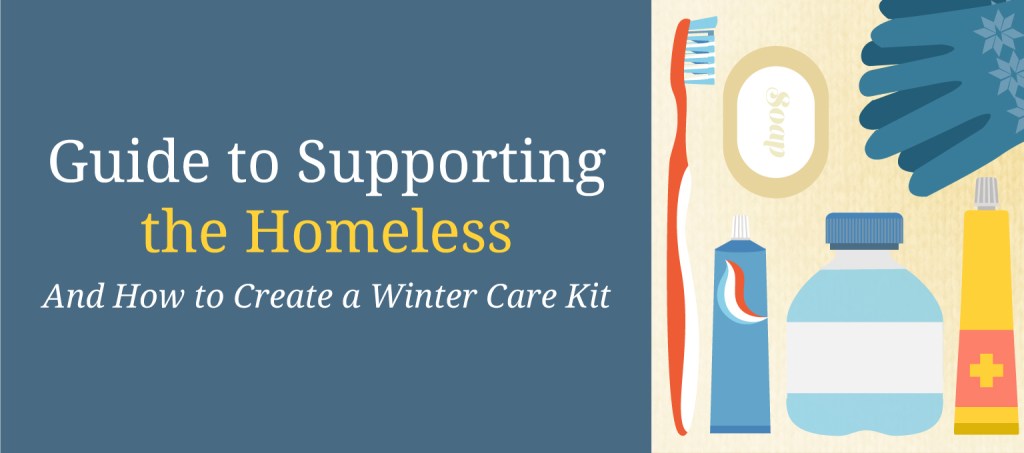
Although the United States is the wealthiest nation in the world, more than half a million Americans were homeless last year, and 36 percent of those were families with children. As the cold winter months take hold, homeless individuals become increasingly vulnerable to health risks such as frostbite, hypothermia, and even death.
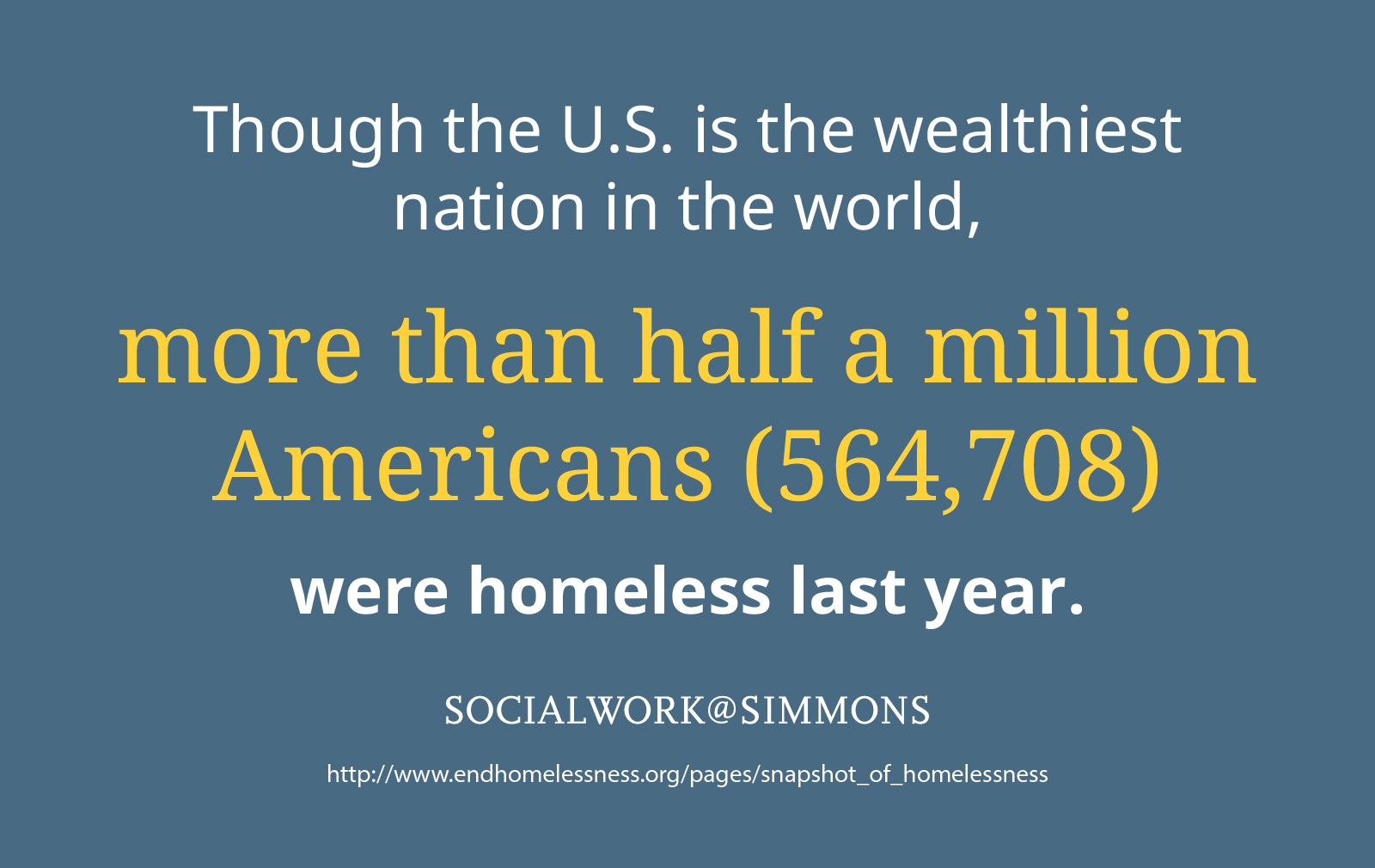
As temperatures drop below freezing, one of the most important things you can do is help a homeless individual locate a warming center or contact a hypothermia shelter hotline. However, shelters and organizations also need help collecting donations and resources that can make the cold months more bearable.If you’re interested in getting involved, you’re in the right place.
This guide will expand on the dangers of being homeless in freezing temperatures and provide some practical tips to take action this winter.
The Perils of Winter
Winter is the season in which the ordinary challenges of homelessness are compounded by severe weather. The most obvious peril is hypothermia, which kills about 700 homeless people each year.
Despite this sad statistic, and the knowledge that hypothermia can occur at temperatures as high as 50 degrees Fahrenheit, many cities across the United States fail to open their emergency winter shelters until the weather becomes much, much colder.
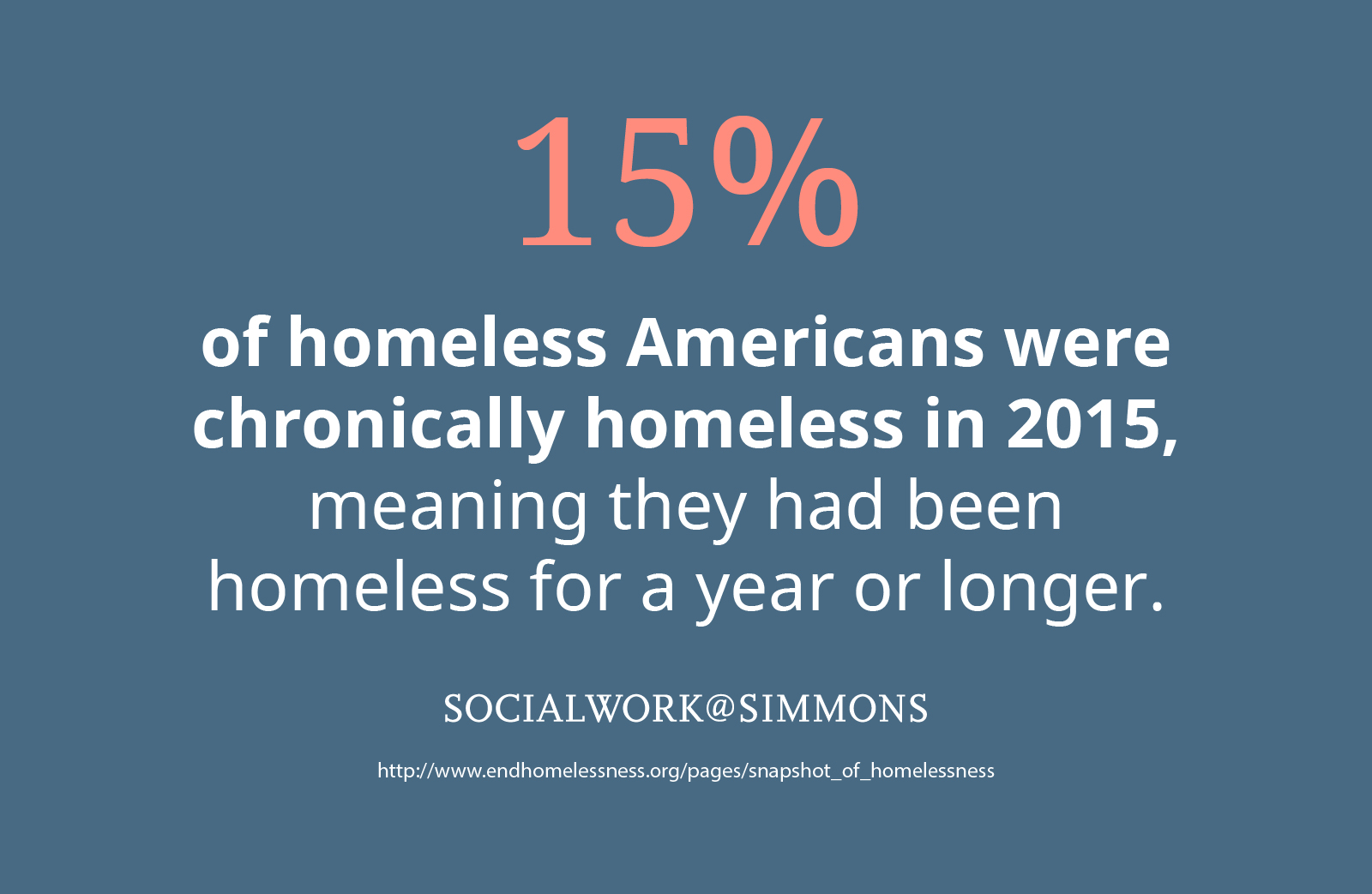
A survey conducted by the National Coalition for the Homeless found that some cities reported opening winter shelters only when the temperature plummeted below 13 degrees. And once shelters are open, residents are only permitted indoors at night.
“Homeless people spend a lot of time outside even if they come inside to shelters, because you generally can’t stay in shelters all day long unless the weather’s really bad,” explains Mariann Bucina Roca, executive director of Friends of Boston’s Homeless, a nonprofit that helps the homeless obtain long-term housing.
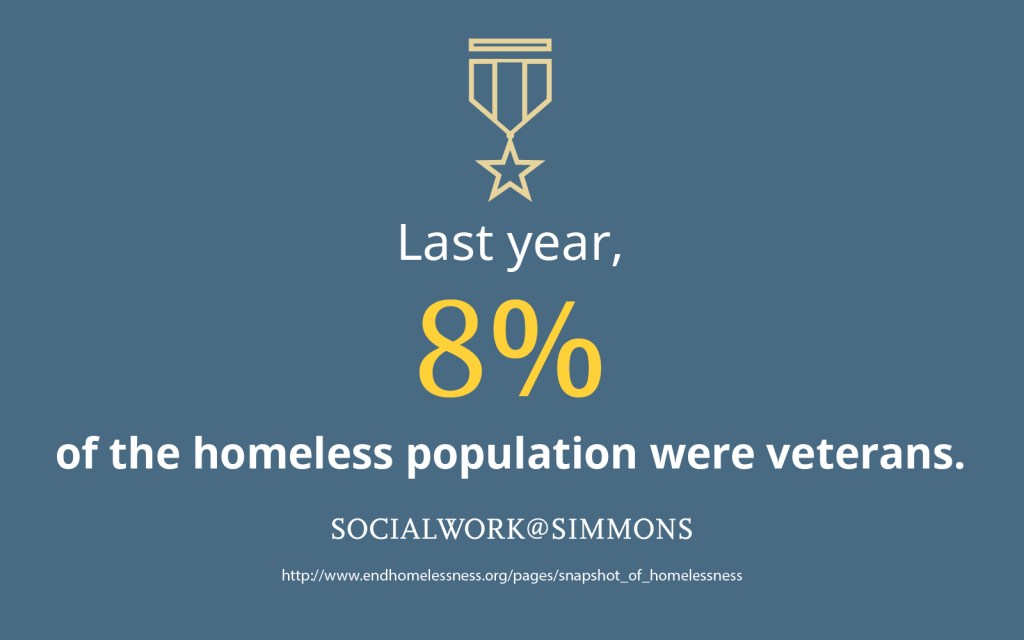
Though the nonprofit works with two local emergency shelters, Bucina Roca is adamant that shelters alone cannot end homelessness. “We know how to solve this,” she says. “And that’s by housing people and connecting them with what they need to go on and live stable, peaceful lives.”
It’s a perspective that’s echoed by the National Alliance to End Homelessness.
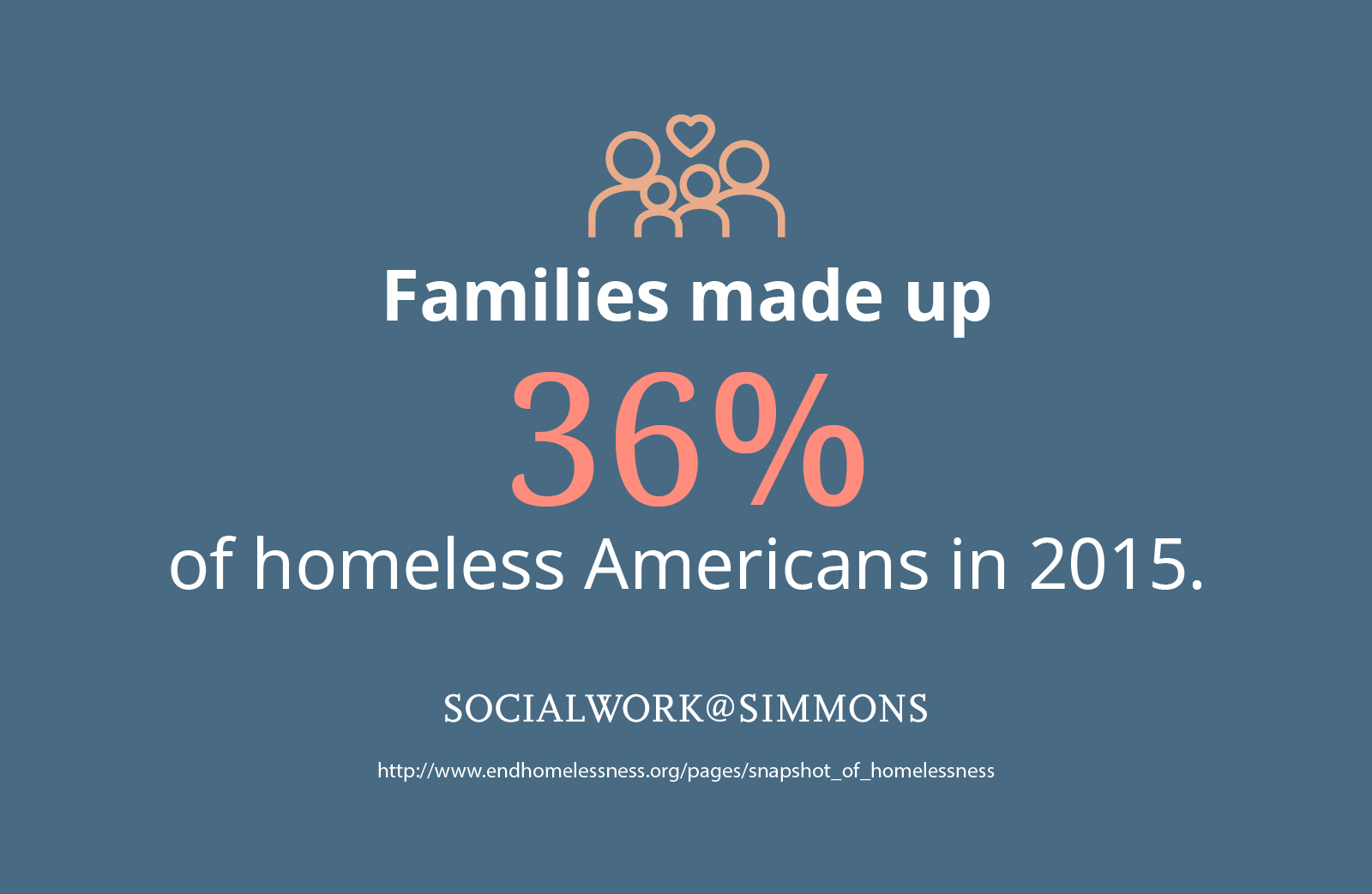
One of the most important strategies for lifting families from homelessness is rapid re-housing,” the organization says on its website. “The more quickly families are connected with permanent housing, the more quickly their homelessness can be solved and their lives can return to relative stability.”
Short-Term Help: How to Create a Care Kit
While long-term housing may be the ultimate solution to homelessness, and Bucina Roca encourages everyone to support such efforts through advocacy and donations, she also discusses the benefits of “care kits.” These are collections of personal hygiene items, food, and other resources that are helpful for those struggling with homelessness. Assembled and distributed by volunteers directly to the homeless or through local agencies, care kits are a way for those concerned to get involved right now.
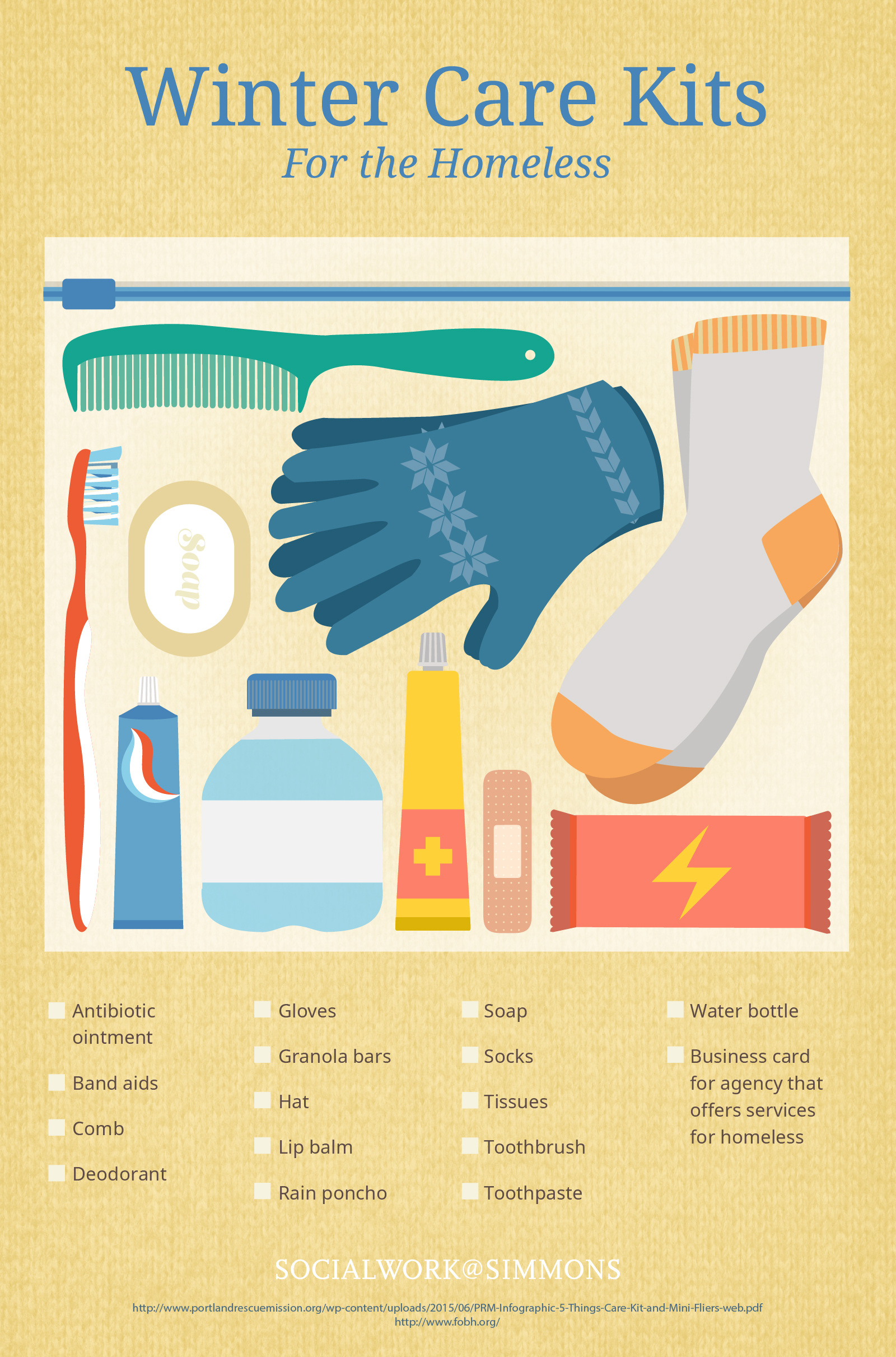
Care kits can be assembled and distributed by you, your family, and friends. Below are a few tips on how to put together and deliver appropriate kits.
1. Gather a team.
Assembling your care kit with others not only helps create a great atmosphere, it also multiplies the number of kits you can put together. So throw a “Care Kit Party” and invite your family, friends, and co-workers. The holidays are an ideal time to do this as homelessness is often on the forefront of everyone’s minds during that time of the year, but know that need persists year-round. Once you and your team are through making your kits, work in pairs to deliver them on foot or drive around in a group.
2. Put yourself in the right mindset.
“Just think about the things that you’d want to feel comfortable,” Bucina Roca suggests. Envision yourself leaving your home and staying away for days, weeks, months, even years. What would you need to bring with you? What would you want to stay comfortable? What would help you preserve your dignity? That last question is especially important because care kits can go beyond addressing needs and wants to helping people keep their self-respect, which is a challenge of homelessness that not everyone immediately acknowledges.
3. Start with the basics.
A helpful exercise to define “the basics” is running through your own morning routine: What do you need to do each day before you leave home? Brush your teeth, take a shower, comb your hair, and get dressed, right? Now what do you need to accomplish those tasks, which of those items can you fit into a large resealable bag, and which of those are size and gender neutral? There you have the basics.
Suggested items: Gallon-size Ziplock bag, toothbrush, toothpaste, disposable razors, body wash, shampoo, conditioner, hand towel, comb, hair brush, cotton swabs, deodorant, lip balm, nail clippers, and socks.
Do NOT include: Any products that contain alcohol, like certain mouthwashes and hand sanitizers.
4. Miniaturize it.
Part of the difficulty of being homeless is the necessity to carry all of your belongs on your person at all times. With this in mind, purchase travel-size products for your kit whenever possible. Portland Rescue Mission also suggests holding on to your unused complimentary hotel soaps, hair care products, and lotions for care kits. Not only will miniature items allow you to fit more into your kits and make them easier for recipients to carry, but many travel-size products, like toothbrushes, come with special cases to keep them clean.
5. Add food and water.
Hunger and thirst are obvious wants associated with homelessness. Meet them with healthy foods and water. “Who wouldn’t want a candy bar?” Bucina Roca asks with a laugh. “But it’s better to provide something else.” She suggests nonperishable foods that are healthy and sustaining. Make sure that each item is individually wrapped, which preserves its freshness and makes it easy to consume. Restaurant gift cards give homeless individuals an opportunity to come in from the cold and purchase hot food. Simmons Adjunct Professor Allison Horton suggests that you aim to donate softer foods. “Many homeless people have poor dental hygiene and soft foods are important as they often can’t chew hard foods like nuts and crunchy granola bars,” Horton says.
Suggested items: Water bottles, granola bars, protein bars, nuts, crackers, dried fruit, trail mix, breakfast bars, dried meats, fruit snacks, and restaurant gift cards.
Do NOT include: Candy, chips, or any other kind of junk food; anything perishable or alcoholic; and gift cards that can be redeemed for alcohol or cash.
6. Include first-aid supplies.
First aid is often out of reach for many homeless people. To that end, care kits should include basic medical supplies. As Bucina Roca points out, “homeless individuals have a lot of foot issues because they’re on their feet all the time,” so add treatments for common foot ailments to your kits as well.
Suggested items: Band aids, antibiotic ointments, tissues, and treatments for athlete’s foot, sores, and warts.
Do NOT include: Anything that contains alcohol.
7. Consider the season.
Homelessness entails exposure to the elements, so think about the weather. Consider the particular difficulties of winter and summer, and add items to your kit to protect its recipient from the cold and the heat. If you’re making kits to be delivered throughout the year, simply label them with the corresponding season using masking tape and a marker.
Suggested items: For winter: knit caps, scarves, gloves, extra socks, rain ponchos, mylar blankets, and hand warmers; for summer: extra water and sunblock.
Do NOT include: Used blankets, comforters, and other bedding due to the risk of bedbugs.
8. Specialize for genders.
It goes without saying that men and women have particular needs, but Bucina Roca highlights an example that’s often overlooked: “Pads or tampons — those are really, really expensive.” Account for this and other gender-specific needs in your care kits by adding special items and labeling the kits accordingly.
Suggested items: Shaving cream and feminine hygiene products.
9. Top it off with resources.
Care kits are a practical and efficient way to meet pressing needs, but these items alone cannot help people overcome homelessness. That requires the services, resources, and expertise of dedicated organizations. Help the recipients of your kits find these organizations by including directions to and contact information for the appropriate local agencies. Portland Rescue Mission has especially creative “coupons” that list their free services, location, contact information, and directions.
Suggested items: Business cards from and maps to local agencies offering services for the homeless; phone cards; and transit tokens or passes.
Do NOT include: Cash.
10. Add the final ingredient: compassion.
After you’ve finished assembling your care kit, the last and most important step is delivering it. It is paramount that you offer your kit with genuine warmth. As we’ve mentioned, retaining one’s dignity is an often-unacknowledged challenge of homelessness, but you can help the recipient of your care kit overcome this struggle by recognizing his or her humanity. Greet them with a smile, explain your intentions, learn their names, and listen to their stories. This interaction is undoubtedly the most vital component of any care kit.
To learn more about assembling your own care kit, peruse these resources:
To learn more about other ways you can get involved, visit Friends of Boston’s Homeless.


